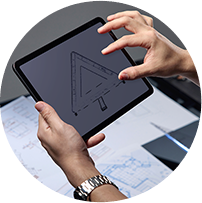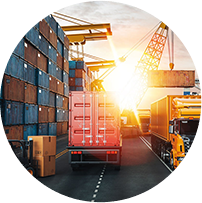Core Components of a Roadside Emergency Kit
Ensuring your
roadside emergency kit is well-equipped with essential items can make a significant difference during unexpected situations. Each component serves a specific purpose to address common vehicular issues, enhance safety, and provide temporary solutions until professional help arrives.
a)Jumper Cables: Jumper cables are crucial for restarting a dead battery, a common issue faced by many drivers. High-quality, heavy-duty cables with insulated clamps and a length of at least 12 feet are recommended. These specifications ensure that you can easily connect your vehicle to another for a jump-start, even if the vehicles can't be positioned closely together. Learning the proper way to use jumper cables is essential to avoid potential hazards such as electric shocks or damage to the vehicle's electrical system.
b)Tire Repair Tools: Tire-related issues, like flat tires or blowouts, are frequent and can leave you stranded. Your kit should include: Tire Jack: A durable and stable jack suitable for your vehicle's weight and model. Lug Wrench: A cross-shaped wrench offers better leverage and is easier to use than a standard wrench. Spare Tire: Ensure it is fully inflated and regularly checked. Tire Pressure Gauge: Helps in maintaining the correct tire pressure, which is critical for safe driving. Tire Sealant: Can temporarily fix small punctures and slow leaks, allowing you to reach the nearest repair shop.
c)Flashlight and Batteries: The reliable flashlight is essential for visibility in low-light conditions. Choose an LED flashlight for its brightness and long battery life. Keep extra batteries in your kit and consider a flashlight with a hand crank or solar power as a backup. Headlamps are also useful, as they free up your hands for other tasks.
d)Reflective Triangles or Flares: Reflective triangles and road flares are vital for alerting other drivers to your presence, especially in low visibility conditions. Place these items at a safe distance behind your vehicle to provide ample warning to oncoming traffic, reducing the risk of secondary accidents. Reflective triangles are reusable, while flares offer the advantage of being visible from a greater distance. Consider carrying both to cover different scenarios.
Safety and Visibility Tools
Ensuring safety and visibility during roadside emergencies is paramount for preventing further incidents and enhancing the overall safety of the situation. The inclusion of proper safety and visibility tools in a roadside emergency kit can significantly mitigate risks and provide reassurance in critical moments.
a)Reflective Triangles: Reflective triangles are indispensable for making your vehicle visible to oncoming traffic, especially in low-light conditions or adverse weather. These brightly colored, reflective markers are designed to be placed at strategic distances behind your vehicle, typically about 10, 100, and 200 feet away. This creates a visible warning line for approaching drivers, giving them ample time to slow down and navigate safely around your vehicle. Reflective triangles are lightweight, easy to deploy, and reusable, making them a practical and reliable addition to your emergency kit.
b)Road Flares: Road flares offer another level of visibility, particularly in poor weather conditions such as fog, heavy rain, or snow, where visibility is drastically reduced. Flares emit a bright, intense light and can be seen from a greater distance compared to reflective triangles. They are particularly useful at night or in low-visibility scenarios. However, since flares are single-use items and involve an open flame, it's essential to handle them with care, ensuring they are placed on a non-flammable surface and away from any combustible materials.
c)High-Visibility Vests: High-visibility vests are crucial for ensuring that you, as a pedestrian around your vehicle, are easily seen by other drivers. These vests are typically made from brightly colored material, such as neon yellow or orange, and are equipped with reflective strips that catch and reflect light. Wearing a high-visibility vest significantly reduces the risk of not being seen, especially when attending to vehicle issues on the roadside at night or in low-light conditions. Keep at least one vest per regular passenger in your vehicle.
d)Flashlight with Extra Batteries: The reliable flashlight is essential for illuminating your work area during a roadside emergency, enabling you to see and be seen. LED flashlights are preferred due to their brightness, durability, and energy efficiency. Ensure that your flashlight is waterproof and has a rugged design to withstand harsh conditions. Include extra batteries in your kit and check them regularly to ensure they are charged and ready for use. Consider a flashlight with multiple settings, including a strobe function, which can serve as an additional signal to alert oncoming traffic.
e)LED Road Flares: As a modern alternative to traditional road flares, LED road flares offer high visibility without the risks associated with open flames. These battery-operated devices emit a bright, flashing light and are often magnetic, allowing them to be attached to your vehicle for added visibility. They are reusable, durable, and typically waterproof, making them a versatile addition to your emergency kit.
 1
1  2
2  3
3  4
4  5
5  6
6 

